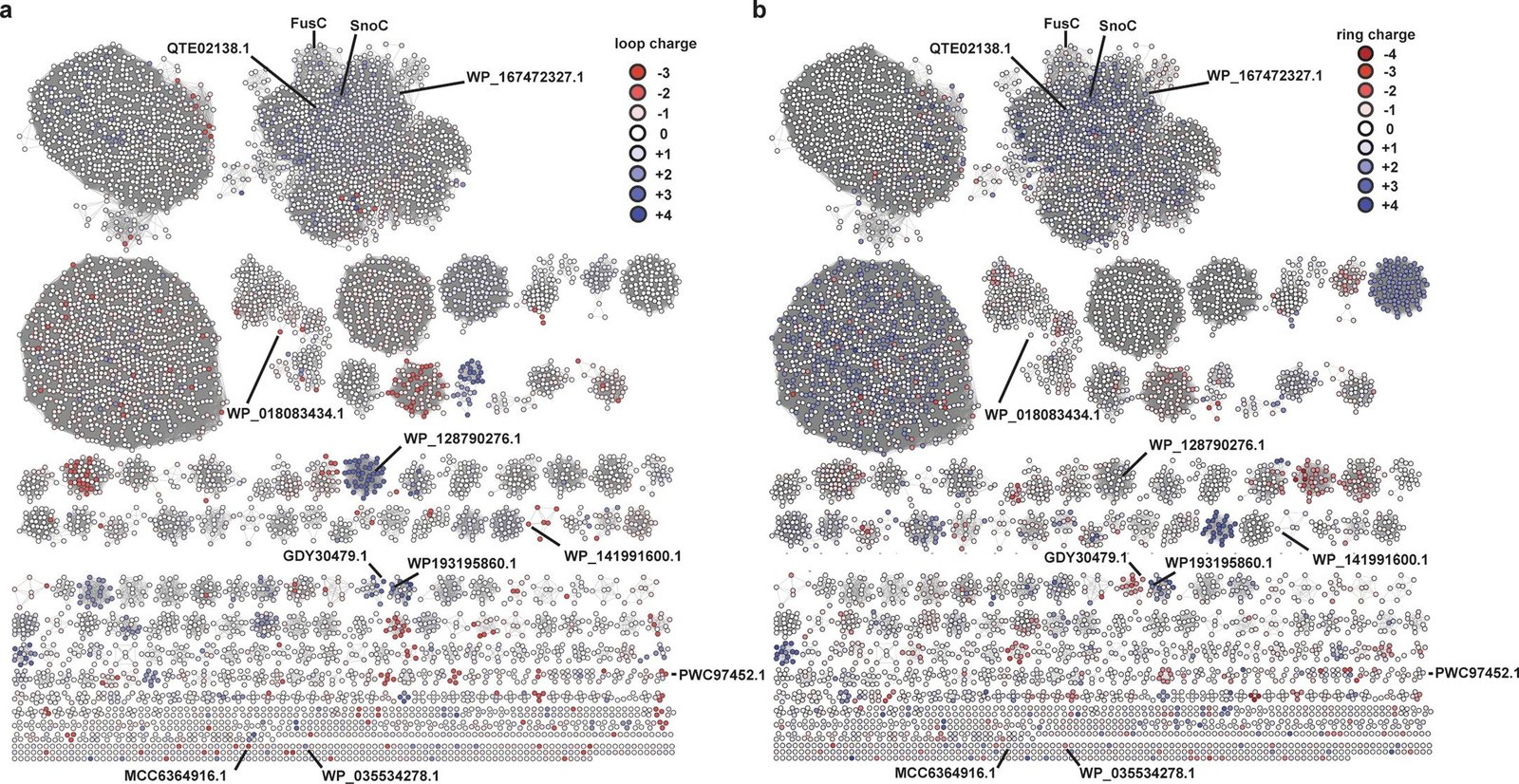
Lasso peptides are natural products made by bacteria. Their unusual lasso shape endows them with remarkable stability, protecting them from extreme conditions. In a new study, published in Nature Chemical Biology, researchers have constructed and tested models for how these peptides are made and demonstrated how this information might be used to advance lasso peptide-based drugs into the clinic.
“Lasso peptides are interesting because they are basically linear molecules that have been tied into a slip knot-like shape,” said Susanna Barrett, a graduate student in the Mitchell lab (MMG). “Due to their incredible stability and engineerability, they have a lot of potential as therapeutics. They have also been shown to have antibacterial, antiviral, and anti-cancer properties.”lasso peptides
Lasso peptides are ribosomally synthesized and post-translationally modified molecules. The peptide chains are formed from joining amino acids together in the form of a string, which is done by the ribosome. Two enzymes, a peptidase and a cyclase, then collaborate to convert a linear precursor peptide into the distinctive knotted lasso structure. Since their discovery over three decades ago, scientists have been trying to understand how the cyclase folds the lasso peptide.
“One of the major challenges of solving this problem has been that the enzymes are difficult to work with. They are generally insoluble or inactive when you attempt to purify them,” Barrett said.
One rare counterexample is fusilassin cyclase, or FusC, which the Mitchell lab characterized in 2019. Former group members were able to purify the enzyme, and since then, it has served as a model to understand the lasso knot-tying process. Yet, the structure of FusC remained unknown, making it impossible to understand how the cyclase interacts with the peptide to fold the knot.
In the current study, the group used the artificial intelligence program AlphaFold to predict the FusC protein structure. They used the structure and other artificial intelligence-based tools, like RODEO, to pinpoint which cyclase active site residues were important for interacting with the lasso peptide substrate.
“FusC is made up of approximately 600 amino acids and the active site contains 120. These programs were instrumental to our project because they allowed us to do ‘structural studies’ and whittle down which amino acids are important in the active site of the enzyme,” Barrett said.
They also used molecular dynamics simulations to computationally understand how the lasso is folded by the cyclase. “Thanks to the computing power of Folding@home, we were able to collect extensive simulation data to visualize the interactions at the atomic level,” said Song Yin, a graduate student in the Shukla lab. “Before this study, there were no MD simulations of the interactions between lasso peptides and cyclases, and we think this approach will be applicable to many other peptide engineering studies.”
From their computational efforts, the researchers found that among different cyclases, the backwall region of the active site seemed to be especially important for folding. In FusC, this corresponded to the helix 11 region. The researchers then carried out cell-free biosynthesis where they added all the cell components that are necessary for the synthesis of the lasso peptides to a test tube with enzyme variants that had different amino acids in the helix 11 region. Ultimately, they identified a version of FusC with a mutation on helix 11 that could fold lasso peptides which cannot be made by the original cyclase. This data confirms the model for lasso peptide folding that the researchers developed with their computational approaches.
“How enzymes tie a lasso knot is a fascinating question. This study provides a first glimpse of the biophysical interactions responsible for producing this unique structure,” said Diwakar Shukla, an associate professor of chemical and biomolecular engineering.
“We also showed that these molecular contacts are the same in several different cyclases across different phyla. Even though we have not tested every system, we believe it’s a generalizable model,” Barrett said.
Collaborating with the San Diego-based company Lassogen, the researchers showed that the new insights can guide cyclase engineering to generate lasso peptides that otherwise cannot be made. As a proof-of-concept, they engineered a different cyclase, called McjC, to efficiently produce a potent inhibitor of a cancer-promoting integrin.
“The ability to generate lasso peptide diversity is important for optimizing drugs,” said Mark Burk, CEO of Lassogen. “The enzymes from nature do not always allow us to produce the lasso peptides of interest and the ability to engineer lasso cyclases greatly expands the therapeutic utility of these amazing molecules.”
“Our work would not have been possible without access to powerful computing and recent advances in artificial intelligence and cell-free biosynthetic methods,” said Douglas Mitchell, John and Margaret Witt Professor of Chemistry. “This work is an extraordinary example of how interdisciplinary collaborations are catalyzed at the Carl R. Woese Institute for Genomic Biology. I am grateful to the MMG theme at IGB and our external colleagues at Lassogen for their participation in solving this complicated problem.”
More information:
Susanna E. Barrett et al, Substrate interactions guide cyclase engineering and lasso peptide diversification, Nature Chemical Biology (2024). DOI: 10.1038/s41589-024-01727-w
Citation:
AI tools help uncover enzyme mechanisms for lasso peptides (2024, September 20)
retrieved 20 September 2024
from https://phys.org/news/2024-09-ai-tools-uncover-enzyme-mechanisms.html
This document is subject to copyright. Apart from any fair dealing for the purpose of private study or research, no
part may be reproduced without the written permission. The content is provided for information purposes only.







